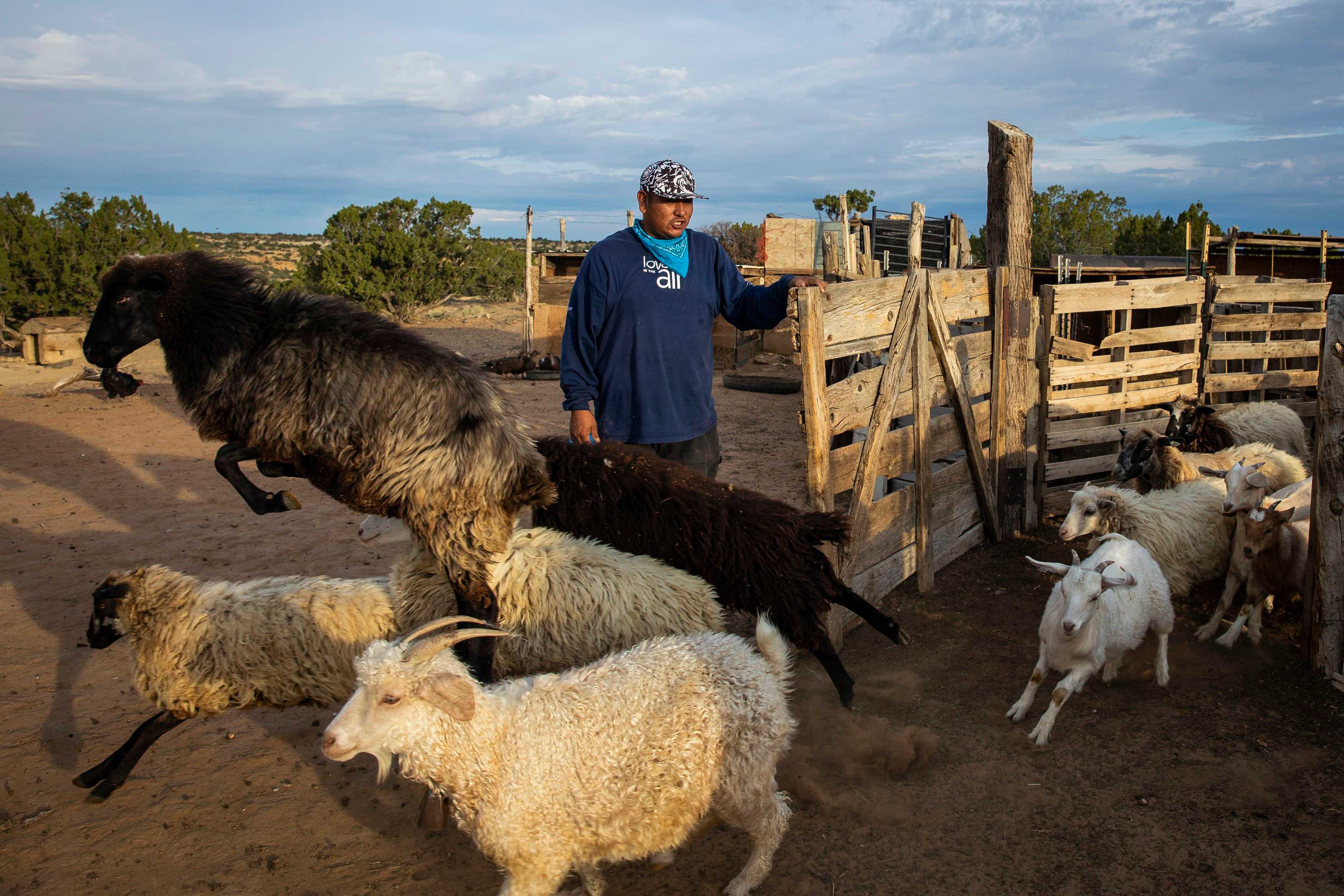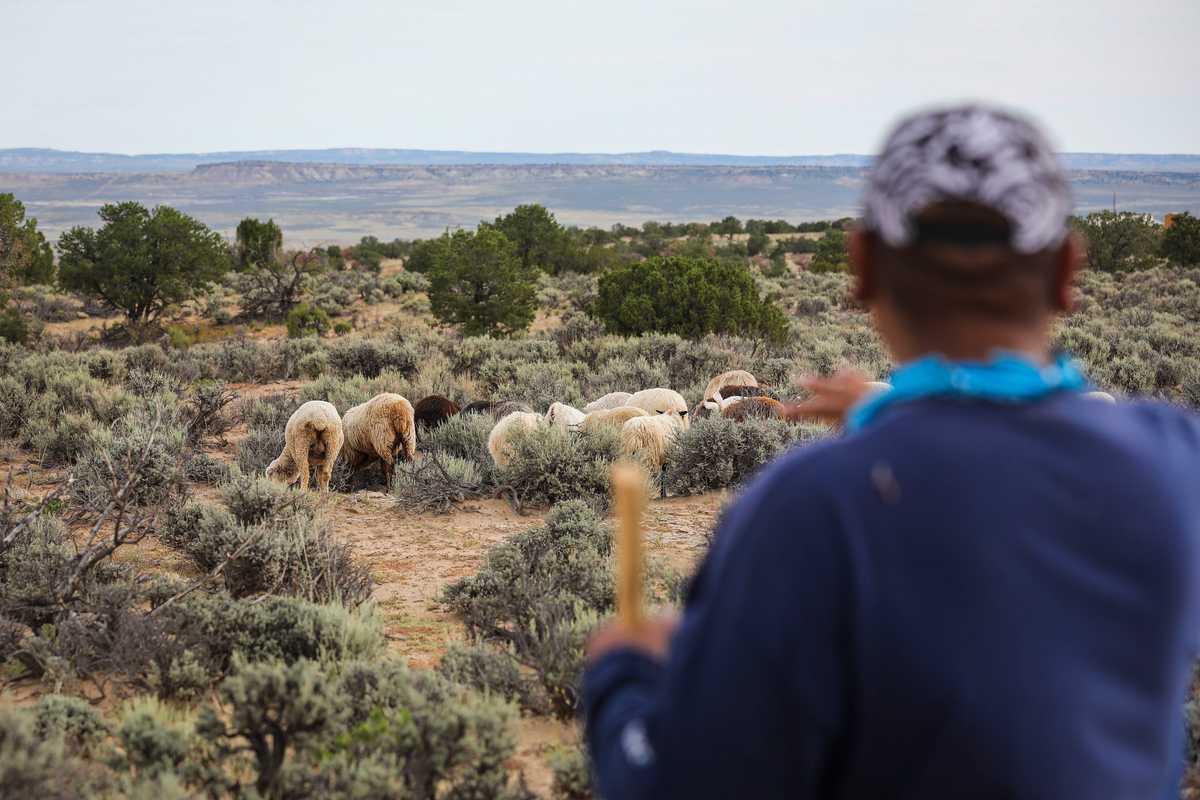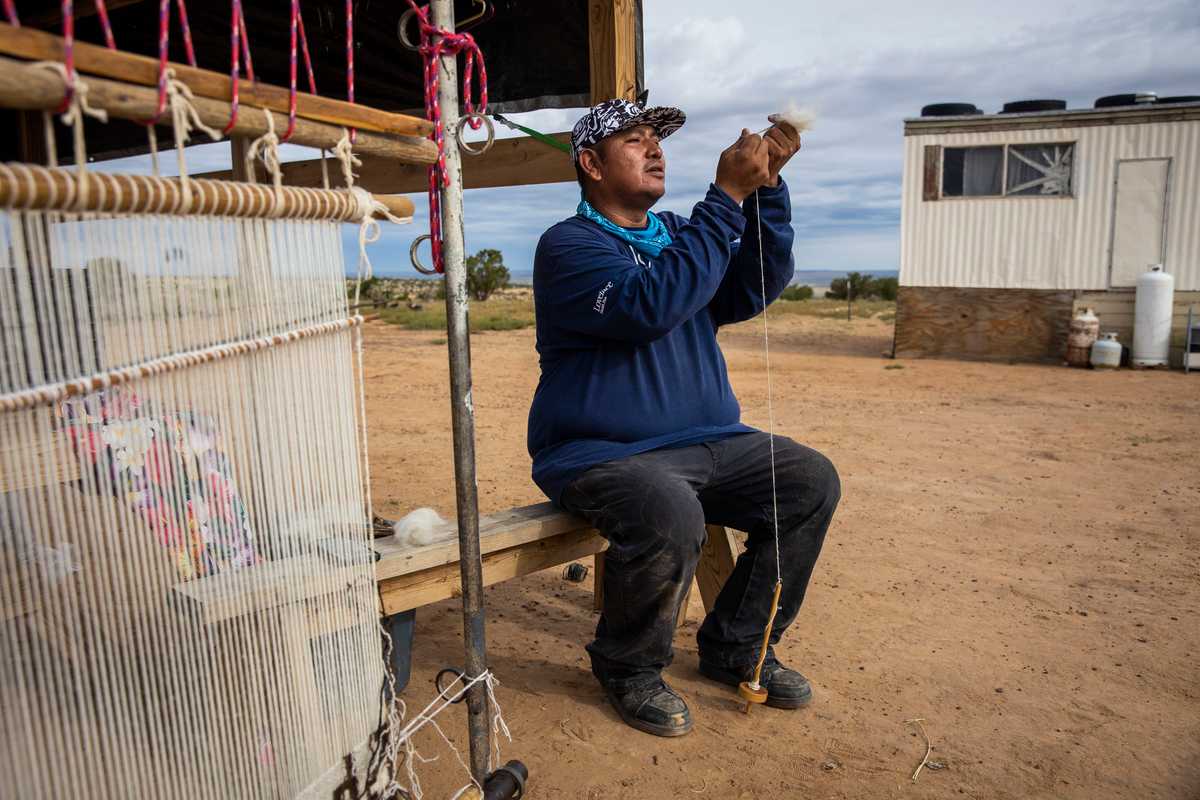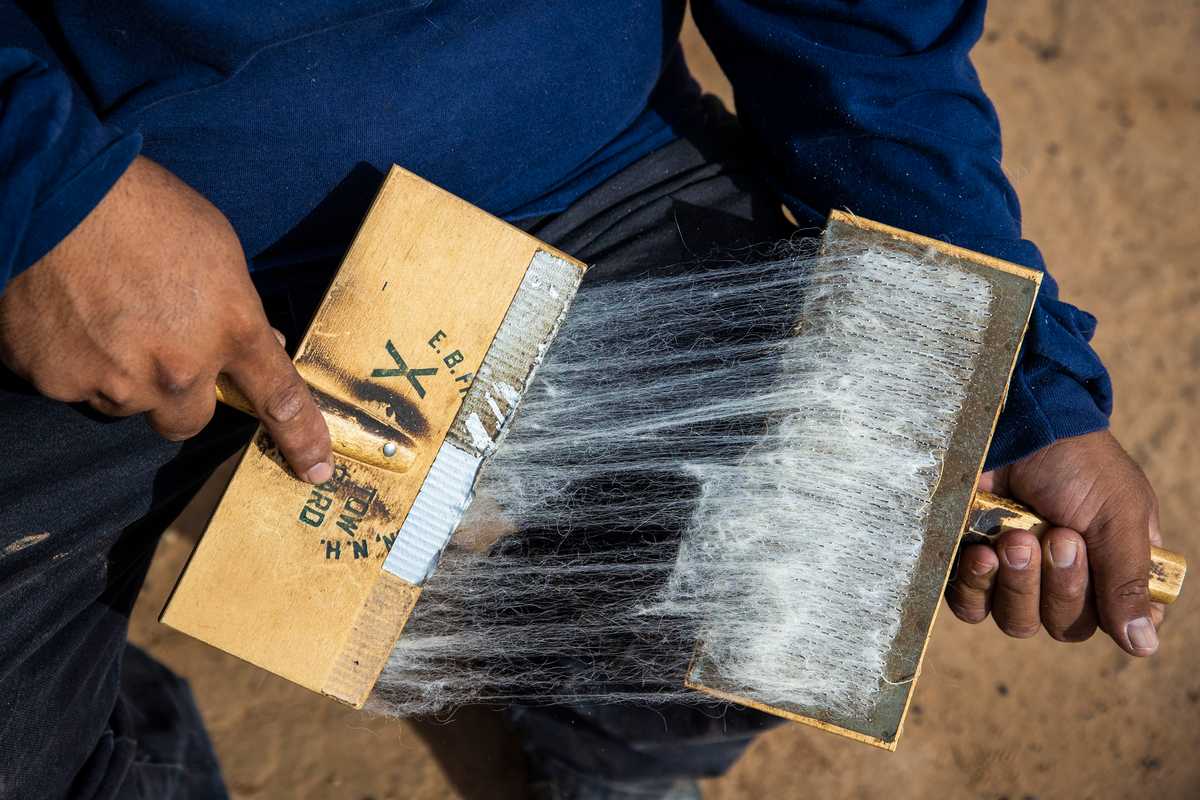
Los Angeles team
Nov. 1, 2022
‘We lost a lot of elders during the pandemic’: A Navajo shepherd keeping traditions alive
TSE’YI’GAI, NAVAJO NATION — Drake Mace remembers being very young and falling asleep to his grandmother working, “the sounds of her weaving comb hitting the loom,” he said on a cool, clear morning on his land in the eastern part of Navajo Nation. As his grandmother did, Mace raises sheep here, spinning yarn from their wool and weaving it into rugs to sell.
Mace is 37, though he looks younger in his baseball cap and sneakers, and tends to about two dozen of the Navajo-Churro breed, plus a few goats. Today, his sheep are skittish and moving fast — he was away for a few days in Albuquerque, the closest big city, “so they have a little attitude,” he said, walking fast as the flock crested a scrubby ridge ahead of us.
As a Navajo shepherd, Mace sees himself as a link in a long chain. “We lost a lot of elders during the pandemic,” he said. “And a lot of our culture is completely severed now.” Mace’s commitment to this life is both general — to preserving Navajo language and tradition — and specific — staying connected to his grandmother, who for him is a figure of awe. “She was a very strong woman, a very independent woman. And she loved her culture.”





Drake Mace watched over his flock, a mix of mostly Churro sheep and a few goats, as they grazed on land near his home on the Navajo Nation. (Erin Clark/Globe Staff)
When Mace was young, his grandmother said she would teach him to weave — but she was only going to show him once. He was a quick study.
Shepherding is hard: Mace doesn’t make quite enough money from the flock, so he has to pick up odd jobs elsewhere. For groceries, he needs to drive an hour to Cuba, N.M. And when a horse broke Mace’s wrist, it took three weeks for him to get treatment. By then, the doctor needed to break the bone again to set it properly.
Mace is also conscious of more existential threats. This year, at least, there has been plenty of rain. But he worries about drought in the years ahead. At times, he’s had to walk his sheep 4 miles to find good grazing. But he doesn’t regret this choice. “They have a saying in Navajo: Sheep is life.”
Mace’s grandmother died two years ago, at the age of 90. Much of what he does reminds him of her: wandering the chalky red mesas with the flock. Spinning yarn on his portable drop spindle, which he does idly in quiet moments. Dyeing wool with juniper berries, lichen, and other plants, as she did.
But it’s when he’s weaving that he feels closest to her. “You think, ‘Wow . . . I’m still practicing her art,’ ” he said. “And it gives you a sense of peace.”
Join the discussion: Comment on this story.
Credits
- Reporters: Julian Benbow, Diti Kohli, Hanna Krueger, Emma Platoff, Annalisa Quinn, Jenna Russell, Mark Shanahan, Lissandra Villa Huerta
- Photographers: Erin Clark, Pat Greenhouse, Jessica Rinaldi, and Craig F. Walker
- Editor: Francis Storrs
- Managing editor: Stacey Myers
- Photo editors: William Greene and Leanne Burden Seidel
- Video editor: Anush Elbakyan
- Digital editor: Christina Prignano
- Design: Ryan Huddle
- Development: John Hancock
- Copy editors: Carrie Simonelli, Michael Bailey, Marie Piard, and Ashlee Korlach
- Homepage strategy: Leah Becerra
- Audience engagement: Lauren Booker, Heather Ciras, Sadie Layher, Maddie Mortell, and Devin Smith
- Newsletter: LaDonna LaGuerre
- Quality assurance: Nalini Dokula
- Additional research: Chelsea Henderson and Jeremiah Manion
© 2022 Boston Globe Media Partners, LLC


